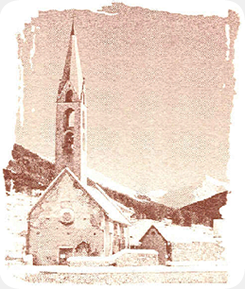Speaker
Description
Despite decades of studies which have seen the nuclear charge distribution being measured with increasing precision, the neutron distribution remains elusive. The difference between the neutron and proton distributions is often expressed as the difference of their root mean square radii: the neutron skin thickness. Recently, the A2 collaboration at MaMi has measured the skin thickness in lead [1]. This experiment was based on coherent pion photoproduction, where a photon impinges on a nucleus and produces a neutral pion coherently (the nucleus remains in its ground state). The pion is then measured through its two-photon decay by utilizing a large solid-angle photon detector, the Crystal Ball (CB) in conjunction with the Glasgow photon tagger. The coherent photoproduction measurements are thus very clean.
At frst order, in the plane wave impulse approximation (PWIA) in which the fnal state interaction between the outgoing pion and the nucleus is neglected, the photoproduction cross section is proportional to the nuclear density from factor. In combination with charge distribution measurements, coherent pion photoproduction is a good way of measuring the neutron skin thickness. However, the distortion caused by the ?nal state interaction of the pion with the nucleus has a significant impact on these cross sections and induces model dependency. These are included in the distorted wave impulse approximation (DWIA).
In this work, we develop a new reaction code in the DWIA to help the analysis of recent measurements by the A2 collaboration at MaMi of the coherent pion photoproduction cross section on $^{116,\;120,\;124}$Sn isotopes. In this reaction code, we use a new potential for the scattering of pion of 12C, based on the work of K. Stricker Bauer [2,3]. This potential is constructed from the partial wave analysis of pion scattering of free protons and neutrons in the SAID database [4]. It contains first and second order terms (the pion being scattered once or twice by the nucleons of the nucleus, respectively) and absorptive terms. The main interest of this potential is that it should be valid on a large range of energies with only minor adjustments and allows the use of realistic densities (for example at mean field approximation).
This tight collaboration between the experimental and theoretical groups and this new reaction code will thus allow the study of the influence of details of neutron densities on the pion photoproduction cross sections by improving the quality of the potential used to simulate the final state interaction. It also allows to quantify the uncertainties on the thickness of the neutron skin.
[1] C. Tarbert et al., Phys. Rev. Lett. 112, 242502 (2014)
[2] K. Stricker-Bauer, Ph.D. thesis, Michigan State University (1980)
[3] See talk of V. Tsaran
[4] R. L. Workman at al., Phys. Rev. C 86, 035202 (2012)
| Topic | Nuclear Structure and Nuclear Astrophysics |
|---|

